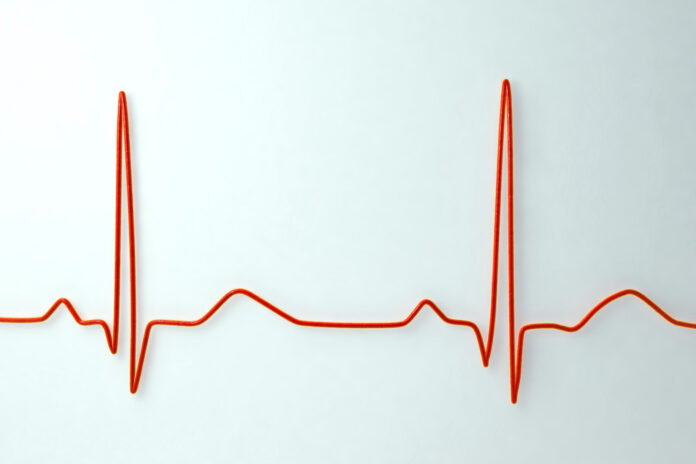Just like a machine, the human body can not function without the heart named engine. And we have several problems regarding the body part. And if the heart is not running fine, you can not expect to lead a healthy life. The heart problem starts from the fluctuation of the heart rate from the normal. This function is called heartbeat. The heartbeat rate differs from person to person, depending on age. But a good resting heart rate is necessary to know, in the case of leading a life according to this. Nowadays heart problem is common to nearly everyone. So, the normal heartbeat rate is mandatory to stay healthy.
A good resting heart rate depends on the age and also the health condition of the person. There are medical and home ways to measure the heart rate. Whatever method you use to know the heartbeat, make sure you take the proper medication if there is any unusual up-down in good resting heart rate.
What is the pulse?
As you can not measure the heartbeat directly, you can read the pulse. Pulse is the heart rate. The pulse in your hand is functioned connecting to the heart, so data from the pulse is considered the heart rate measurement.
To understand the measurement, you need to fix a minute and read the heartbeat within this time. And this pulse rate varies from person to person, depending on age, disease. When you take a rest or spending time in relaxation, the pulse rate is lower than normal.
Also, when you exercise or do something stressful, then the pulse rises high. Because of exercise, more oxygen-rich blood is the requirement by the body. But first, you need to know the methods of taking pulse if you want to do it at home. With the help of this way, you will be beneficial.
How to take the pulse reading?
- At first, place your index, second and third fingers on the palm side of the other wrist. Below the base of the thumb, place your fingers. Don’t use your fingers entirely, just the tips. Otherwise, you can not understand the pulse, as they were not very identifiable.
- You can also get the same reading from the neck. Instead of a hand, put your fingertips of the index and second fingers on the lower neck. On any side of the windpipe, you can get the same reading as from the hand,
- Then you press the fingers lightly on the hand. The little pressure will allow you to feel and understand the pulse clearly. Unless you feel the blood pulsing beneath your fingers, don’t put the fingers away.
- You can also move fingers around the pulse, not very far from the nerves. Slightly up and down will navigate the fingers if you can find them at the middle of the nerve.
- Once you start to feel them clearly and read them, use a watch for counting. Hold the wristwatch in your other hand, or you can also count the clock near you.
- Then start counting the heartbeat you are feeling through your fingertips. Though the time is fixed in one minute to get the actual rate, you need to read the pulse just for ten seconds. Within the time, the reading will convert into one time. Then you can have data about your pulse.
- To get the actual result, multiply the number by six. The final number is your real heartbeat rate per minute.
- You can instead read the pulse for 15 seconds and multiply with four. The result comes out the same.
How easy the process is! Now you can read anyone’s heart rate just sitting at home.
What is a normal good resting heart rate?
At first, you should know what a normal resting heart rate is. It ranges from 60 to 100 beats per minute for adults aged above 18 and 70 to 100 beats per minute for children aged 6 to 15.
If you notice, the heart rate per minute changes from adults to children. So, you can conclude that the heart rate depends fundamentally on the age of the person. Many factors work on the fluctuation in heart rate besides age. All of them may not have a direct influence on the heart rate difference, but all of them affect their way:
- Age:
The doctors said that children tend to have higher heart rates than adults. Because of their metabolism, children possess a higher heart rate than older people. For that, the normal good resting heart rate of a newborn is 100-150 bpm. We can also see the change in heartbeat according to age-
- 0 – 1month old: 70 to 190 bpm
- 1-11 months old: 80 to 160 pm
- Less than two years old: 80 to 130 bpm
- 3- 4 years old: 80 to 120 bpm
- 5- 6 years old: 75 to 115 bpm
- 7 – 10 years old: 70 to 100 bpm
- Up to 10 years old: 60 to 100 bpm
Also, different ages showcase different heart rate-
- 20 years old: 100-170 bpm
- 30 years old: 95-162 bpm
- 35 years old: 93-157 bpm
- 40 years old: 90-153 bpm
- 45 years old: 88-149 bpm
- 50 years old: 85-145 bpm
- 55 years old: 83-140 bpm
- 60 years old: 80-136 bpm
- 65 years old: 78-132 bpm
- 70 years old: 75-128 bpm
So, age affects changing heart rate.
- Gender:
Doctors also stated that women have more heart rates than men. Generally, women up to age 55 show a higher heart rate than the same of men. There are perhaps many reasons, where one of them is the difference in sex hormones. The hormone is called testosterone. This hormone is fundamentally higher in men. Having less amount of this hormone, women have a higher heart rate than men.
Besides sex hormones, the body and heart size of women can also affect the rate of heartbeat. So, depending on gender, the heart rate changes too.
- Fitness and activity levels:
Generally, when someone is resting or not doing anything with physical strength, the heart rate stays normal or low.
When a person does exercise or physical activities, the heart beats faster than the usual time. Therefore, the heart rate tends to increase from the normal level. Also, in a state of anxiety or nervousness, the rate fluctuates very fast. And as soon as he rests, heart rate becomes normal or as before within an hour.
Exercises like walking, running, cycling can raise the heart rate in fast mode. For example, a well-trained athlete may have a good resting heart rate of 40 beats per minute. Generally, a lower heart rate at rest defines more efficient heart function and better cardiovascular fitness.
- Being a smoker:
People who have extensive addiction to smoking showcase higher heart rate than the non-smoker group of people. Both male and female smokers have higher heart rates. Age is not a factor in the smoking category.
The female smokers have a maximum heart rate of 198 bpm. And male smokers have a maximum heart rate of 199.3 bpm. The lowest bpm for a smoker female is 128.1 bpm and for a male is 133 bpm. The non-smokers show the highest bpm of 191 for women and 193.2 for men. And lowest bpm for women is 114.6 and for men is 120.4.
But when female smokers undertake the recovery program for smoking, the heartbeat rate declines drastically. Also, during exercising, the rate decreases. During sub-maximal exercise, females have a higher resting heart rate or lower than the smoking period compared to male smokers.
- Emotions:
Researchers suggest a connection between emotions and the heart. Several studies strongly agree that the psychological factors of a person have a direct link with heart rate.
Emotions cause both positive and negative effects on the human body, especially on the heart. You may be sometimes angry, tensed, anxious, nervous, frustrated, depressed, frightened, depressed, having grief, lost a job. Then depending on the emotions, your body tends to release more stress hormones. For this, the internal function of your body works smoothly.
So, stress makes the heartbeat more than usual. The body vessels also become narrow. They push blood to the center of the body. Then the hormones start to increase the blood pressure and blood sugar levels. In this process, stress has the chance to create high blood pressure. Also, stress affects some behaviors like addiction to smoking, drinking alcohol, physical inactivity, and overeating.
Overall, stress or negative emotion tends to increase our heart rate than normal and contribute to cardiac arrest and heart attack. We need medication and medical help to reduce stress to keep our heart rate at a good resting state.
When the stress or depression subsides and comes to normal, the heart rate also comes to declination. But if you are stressing and anxious, your body fails to have collaborated with overall body functions. Then, you start to feel low and unwilling to do anything. As the heart rate goes high, your body doesn’t function properly. Though It is still not clear, psychological behaviors do have any actual connection with heart rate.
There are many other factors for changes in normal heart rate, such as
- Having cardiovascular disease, high cholesterol, or diabetes,
- Air temperature,
- Body position (standing up or lying down, for example),
- Body size,
- Medications
Target heart rate zone:
Target heart rate is the healthy heartbeat range that shows how fast the heart should be beating when engaged in any physical activity. We can also say that the target zone is the rate of the heartbeat. That will tell if you are pushing too hard or too little.
Now we know the good resting heart rate, but the target heart rate zone is necessary. How to calculate the target zone? It is so easy that you can do it at home.
- To know your highest heart rate, subtract your age from 220. The result will be the maximum heart rate or pulse per minute. The higher heart rate result may fluctuate if you were engaged in any moderate or extreme exercise.
- Calculate your resting heart rate. By counting how many times the heart beats per minute while you are taking rest. The resting can be the first moment waking up in the morning. The result would be between 60 and 100 beats per minute for the adults.
Then, calculate the heart rate reserve (HRR) by subtracting your resting heart rate from your maximum heart rate,
- Multiply the HRR by 0.7. Then add the resting heart rate to the number.
- Again, multiply the HRR by 0.85 and add the resting heart rate to this number.
- These two numbers are your average target heart rate zone for extreme exercise while using the HRR to calculate your heart rate. In the case of long-term exercise, the target resting zone should be between these two numbers.
The chart below is an estimate of target heart rate zones according to ages-
- 20 years old: 200 bpm
- 30 years old: 190 bpm
- 35 years old: 185 bpm
- 40 years old: 180 bpm
- 45 years old: 175 bpm
- 50 years old: 170 bpm
- 55 years old: 165 bpm
- 60 years old: 160 bpm
- 65 years old: 155 bpm
- 70 years old: 150 bpm
Regular exercise can keep your heart rate healthy. Yoga and endurance training can decrease resting heart rate. The heart rate becomes lower than the group of people who don’t participate in these activities. For example, athletes generally show a lower resting heart rate due to cardiovascular fitness and functional capacity. For this, the heart gets healthier with sufficient regular exercise.
Wrap up:
A good resting heart rate is necessary to lead a healthy life. And also, you need to know the factors which alter the heart rate to some extent. So, you can avoid doing such stuff. This article will provide all the necessary information about a good resting heart rate. Now, enjoy life with no worries about high or low heart rate because you live life once at a time.





